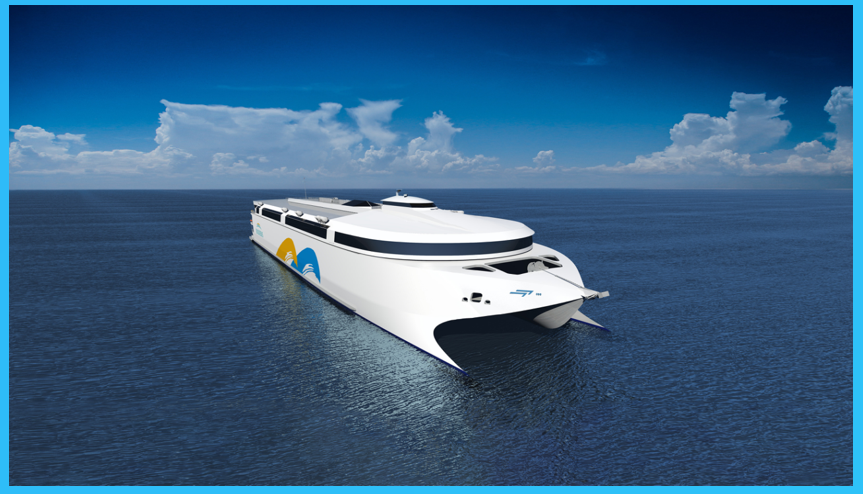The maritime industry reached a new milestone this week as the China Zorrilla, the largest electric ship ever built, officially launched from Hobart, Tasmania. Manufactured by Incat Tasmania for South American ferry operator Buquebus, the 426-foot vessel will soon begin operations between Buenos Aires, Argentina and Colonia, Uruguay, carrying up to 2,100 passengers and 225 vehicles.
Originally planned to be powered by liquefied natural gas (LNG), the vessel underwent a bold redesign after discussions between Buquebus President Juan Carlos López Mena and Incat Chairman Robert Clifford. The result is a fully electric ship featuring over 250 metric tons of batteries and a 40-megawatt-hour Energy Storage System (ESS)—four times larger than any previous maritime battery installation, according to Incat.
“We’re not just building a ship—we’re building the future,” said Incat CEO Stephen Casey in a company press release. “Hull 096 proves that large-scale, low-emission transport solutions are not only possible, they are ready now.”
The ship’s launch comes as the global shipping industry faces increasing pressure to decarbonize. Maritime transport accounts for roughly 2% of global energy-related carbon emissions, according to the International Energy Agency (IEA), and the demand for shipping is only expected to rise.
In response, the International Maritime Organization (IMO) adopted a revised strategy in 2023 to cut emissions and reach net-zero by 2050. The plan includes future fuel standards and carbon pricing mechanisms designed to push the industry toward cleaner energy sources.
While China Zorrilla is still undergoing interior completion and is scheduled for sea trials later in 2025, its deployment is already being seen as a proof-of-concept for large-scale electric shipping.
The project also benefits from collaboration with technology partners like Wärtsilä, whose president Roger Holm emphasized the broader significance:
“Ferries play a vital role in meeting the growing demand for environmentally sustainable transport options. Ship electrification is key to enabling the sector to transition toward net-zero emissions,” said Holm, executive vice president of Wärtsilä Corporation.
Further research underscores the promise of electrification. A 2023 report from Lawrence Berkeley National Laboratory found that converting U.S. ships under 1,000 gross tonnage to electric propulsion could reduce emissions by 34–42% by 2035 and up to 75% by 2050—without compromising operational demand.
As the China Zorrilla prepares for open waters, it sets a precedent for the global shipping industry. Its success may not only influence future ship designs but also accelerate the push toward an emissions-free future on the seas.
Sources:
- Incat Tasmania Press Release
- www.pressenza.com
- Bloomberg.com – World’s Largest Electric Ship Sets Sail
- Lawrence Berkeley National Laboratory Report, 2023
- IEA – Energy-Related CO2 Emissions from Shipping
- International Maritime Organization Climate Strategy
The Hull 096 Electric boat, China Zorrilla Picture by Incat



